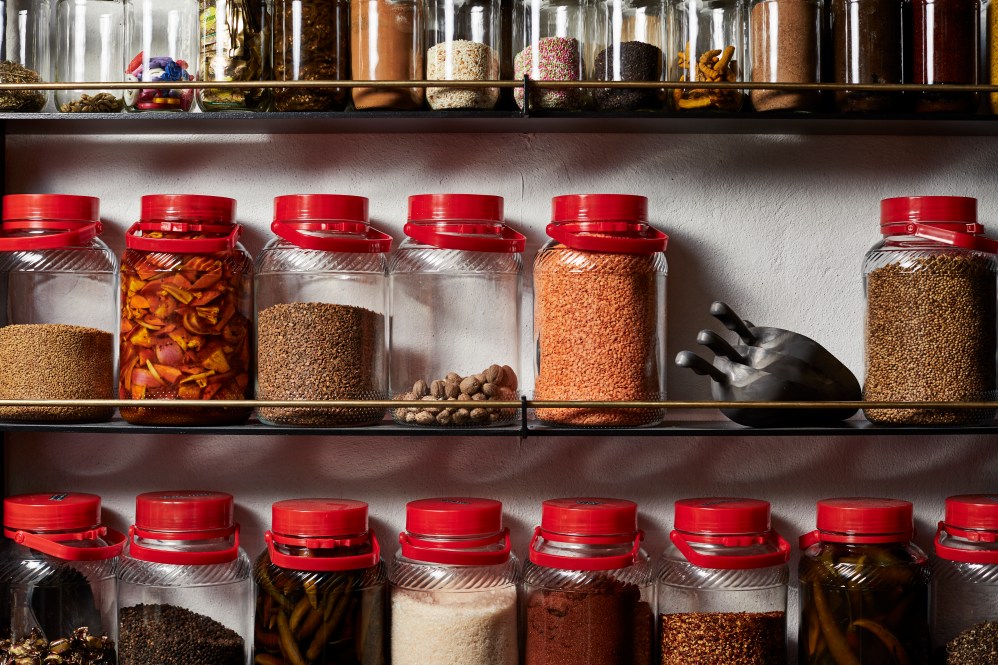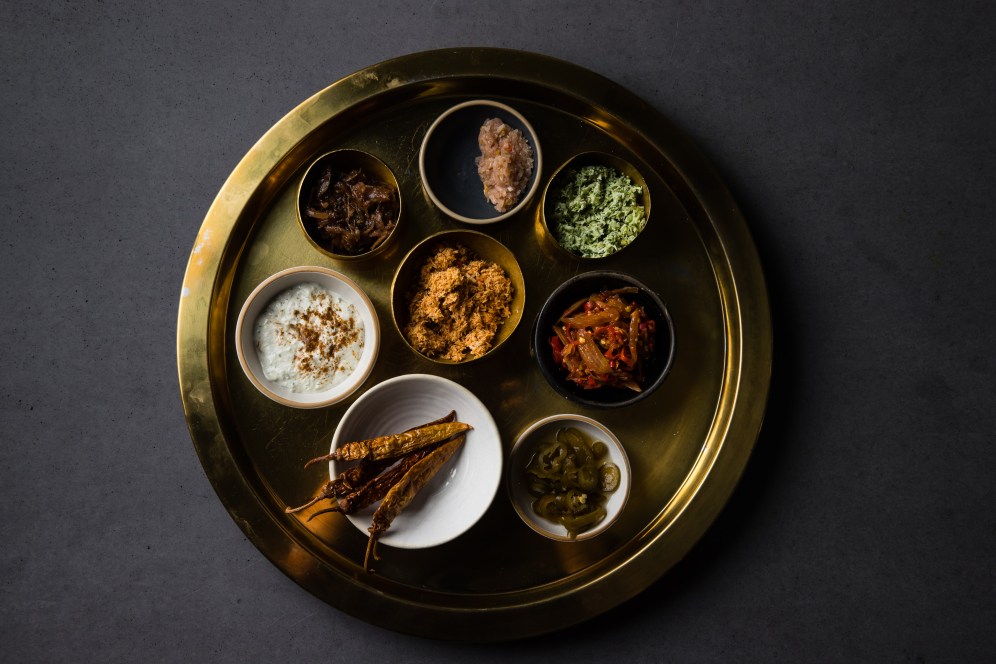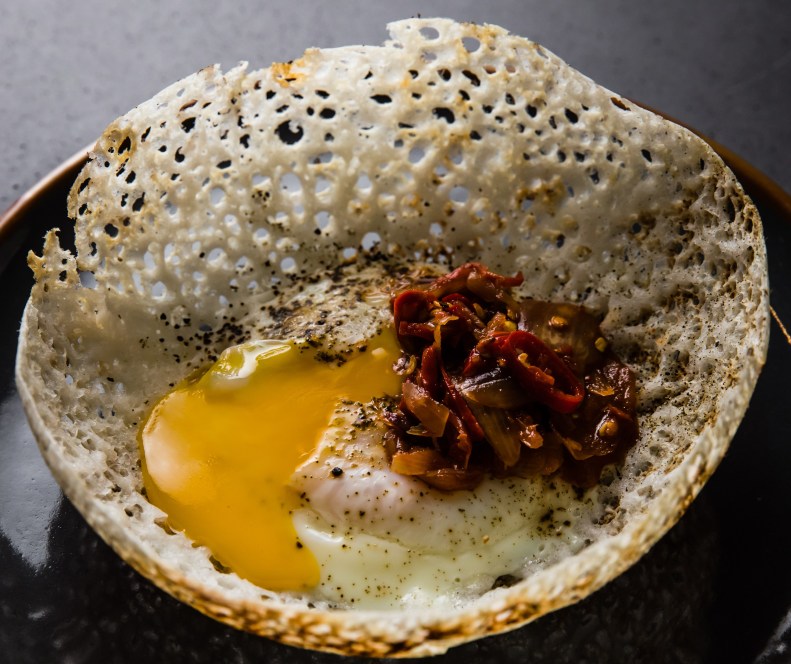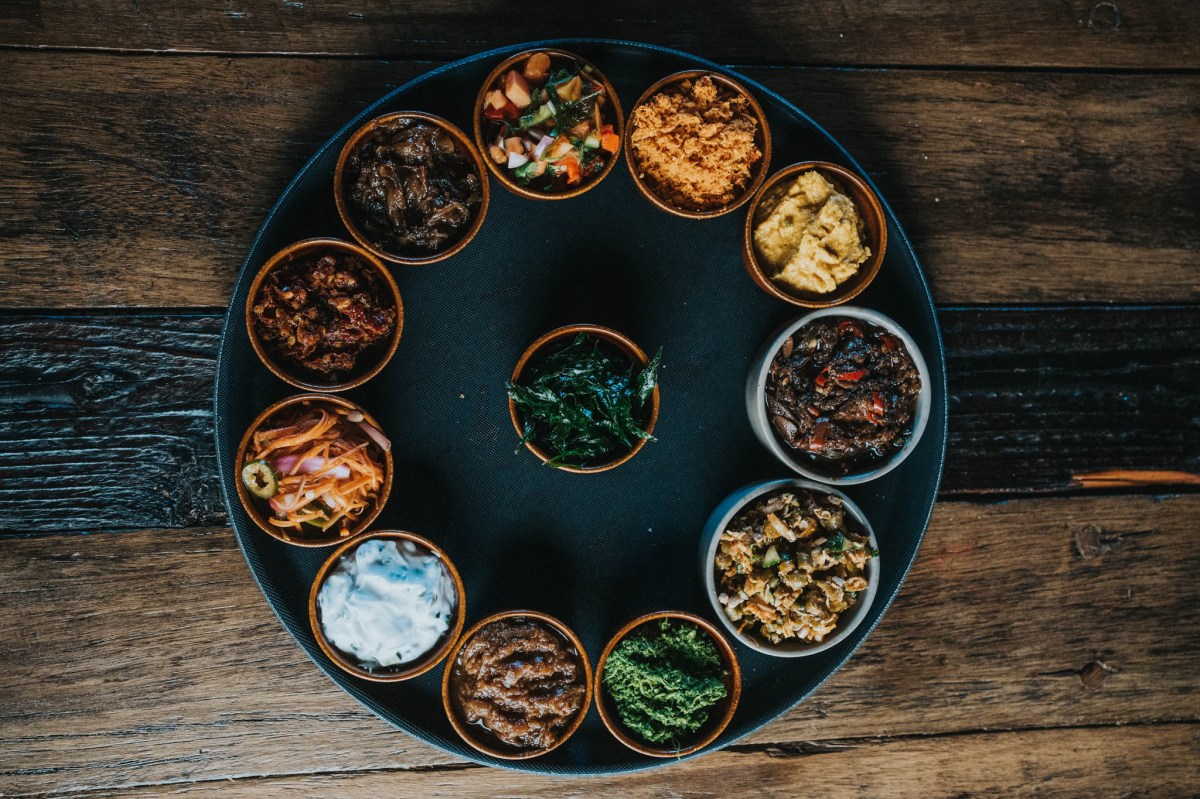Sweet, spicy and tangy are just a few words that can be used to describe sambols. The condiment hails from Sri Lanka and comes in multiple forms, often found in large family style spreads and everyday cooking.
For Sri Lankan people, no meal is complete without sambols and no sambol is the same. It’s a reflection of the vibrant cuisine which spawned from and is the culmination of different flavours and textures.
A sambol can be anything from an acidic pickle to a fruity mixture or a hot chilli paste, and there are plenty more iterations coming to the fore as chefs carry on tradition and forge ahead with new creations.
Hospitality speaks to Lankan Filling Station’s O Tama Carey and Shaun Christie-David from Colombo Social about sambol variations and the importance of sambols in Sri Lankan cuisine.
Sambol is serious business in Sri Lanka. Although it bears some similarities to sambal, the Malaysian or Indonesian version, they are not to be confused. Lankan Filling Station Owner and Chef O Tama Carey outlines the key differences between the two: “One of the interesting things about sambol is that Sri Lankans are the only ones who spell it with an ‘o’ not an ‘a’,” she says. “It’s also interesting the way they use the word sambol and the type of dishes sambol can cover. It’s very different to the more traditional Malaysian, Vietnamese and Indonesian versions. The Sri Lankan version covers a whole heap of other dishes you wouldn’t necessarily expect.”

In the same way as sambal, a sambol is comparable to a dip or a relish in the sense that it can be used to add more to a meal. Owner of Colombo Social Shaun Christie-David grew up eating sambols and describes the significance within his family.
“My mum describes these side elements as a ‘rice pause’ and a way to extend dishes,” he says. “Sri Lankan cuisine is so unique; it has so many different flavour profiles and balances for cooking. You have sweetness, sharpness, fire and a whole heap of different elements that go into it, which is what the sambols provide in little bursts.”
Pol, katta and seeni are the three traditional sambols and are on the menu at Colombo Social and Lankan Filling Station. “Seeni sambol has more sugar; it’s a sweet and sour, caramelised onion sambol [with] sweet spices and Maldive fish,” says Carey.
“It has a lot of tamarind and jaggery, but still quite spicy – it’s not a chilli-based relish like a lot of other sambols you find. Katta sambol is more like what you would expect a sambol to be like, and that’s just chillies and onion. Sometimes it’s made with Maldive fish, but it’s fiery and fresh.”
Pol is perhaps the most popular sambol and means coconut. It’s made from shredded coconut which is traditionally mixed with spices and dried Maldive fish. At Lankan Filling Station in Sydney, there are two kinds of pol sambol on offer.
“We’ve got a big sambol selection and that’s probably the biggest section on the menu,” says Carey. “Pol sambol is one you would get with most meals. It’s a staple go-to for breakfast, lunch and dinner. The green pol sambol we do is more South Indian in style with lime and coriander.”
Colombo Social in Sydney’s Enmore also have an extensive sambol offering, which covers an array of traditional sambols and more modern versions. Christie-David refers to a papaya salsa that plays a key role in a main dish. “The papaya salsa is one of our new sambols we’ve created which goes into our softshell crab taco,” he says. “The freshness embodies both Australia and Sri Lanka.”

Other variations are childhood recipes that have been made and adapted for the restaurant. “We go back to my mum’s sambols I’ve grown up with,” says Christie-David. “She’s always given us a carrot sambol which is carrot, onion, chilli and sugar to give it a little bit of sweetness.”
Although each sambol uses different elements, there are a few ingredients that are almost always involved, one of them being Maldive fish. “Maldive fish is used quite a lot in Sri Lanka, it’s a dried fish from the Maldivian islands (hence the name),” says Carey. “It’s usually bonito, tuna, skipjack or any kind of oily fish that is dried and smoked. Usually you buy it in flake form and it’s used as a seasoning more often than not. [It’s comparable to] fish sauce in Thai cooking, which is used as both a flavouring and a source of protein.”
While Maldive fish may be prominent in pol sambol, it is also used to enhance the flavour profile of other variations including seeni. “You have some dishes that use Maldive fish, which have a strong fish flavour to it,” says Carey. “Pol sambol can often taste quite strongly of it, whereas seeni sambol has more of a background note.”
To cater to vegan diners, Colombo Social attempted making pol sambol without Maldive fish. The decision was also partly due to Christie-David’s own personal preferences. “It was the one thing I did not like growing up, so my mum used to make one without the dry fish and I’m like, ‘This is so much better’,” says Christie-David.
“The traditional Sri Lankans would persecute me for saying this, but there are a lot of people who like pol sambol without it. But I am succumbing to the ghosts of ancestors past and doing them justice by putting it back in. We tried to play around with some vegan alternatives, but it just didn’t have the flavour you need, so now we do it the right way.”

But the restaurant’s revamped menu will have two versions: one made with and one made without Maldive fish to cater to all customers.
Sourcing the right ingredients is crucial when building sambols with balance, and Carey says access to Sri Lankan produce in Australia isn’t a problem. “In this day and age, it’s pretty easy to get Asian ingredients in Australia,” says the chef, who uses a specialist supplier.
“Harris Farm sells curry leaves; I think Woolworths even has curry leaves. The only tricky ingredient is the Maldive fish, which you do need to go to a specialty grocer. Fresh coconuts for coconut sambols can always be found again at Indian, Sri Lankan and Thai grocers. They usually have a frozen product, which is pretty good, or you can grate it yourself, but it’s a little bit time consuming.”

Making and serving sambol involves maintaining an equilibrium of flavours. Each sambol is different in technique, but harmony is a constant. “Even with the really hot sambols, it’s nice to have balance whether it’s with sweetness or citrus,” says Carey.
The process of making pol sambol is a prime representation of this balance. “The word sambol in Sri Lankan cooking covers such a wide range of dishes, so there’s no standard ingredients or methods, but the elements are usually pounded together for pol sambol,” says Carey.
The dish starts with Maldive fish, chilli, salt, onion, black pepper and the optional choice of curry leaves. “You pound the coconut and it releases some of the coconut oil, so it becomes almost sticky,” says Carey. “The heat depends on who makes it, but you also get a really nice balance of heat from the chilli and pepper. You get two different types of heat and the lime juice cuts through it for freshness and the Maldive fish gives it a smoky, earthy flavour.”
A sambol is never alone and is generally served with everything from curries and rice to roti and hoppers— a Sri Lankan rice pancake. Christie-David describes the rituals of eating these meals and the way they interact with one another. “When you’re eating in Sri Lanka, we eat with our hands and we grab a little bit of each thing,” he says. “We put it all together, roll it into a ball and put that in our mouth so you’ve got a very balanced spoonful (if you want to call it that).”

Hoppers are a staple at Lankan Filling Station and pair perfectly with sambols. “Hoppers are one of the things we specialise in and traditionally at street stalls that’s what you’d eat sambols with,” says Carey. “You wouldn’t necessarily have a big curry meal, it’s more often about having a hopper and a sambol.”
The vast assortment of sambols in Sri Lankan cookery all have something unique to a meal. “Sri Lankan food is the ultimate fusion food — we have touches of British, Malaysian, Chinese, Portuguese, Dutch and Indian,” says Christie-David. “I love that sambols create such a balanced meal and add so much variety. To be able to have a degustation on your plate when you’re having lunch is something quite unique and special to Sri Lankan food.”
Image credit: Nikki To for Lankan Filling Station; Gully 9 and Kitti Gould

